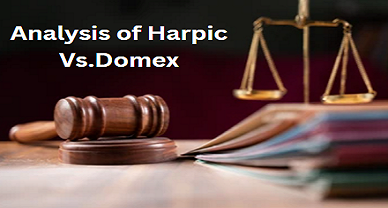Doctrine of Laches as An Armor To Trademark Infringement
INTRODUCTION
The doctrine of laches is based on the Latin maxim Vigilantibus Non Dormientibus Aequitas Subventil[1] which is defined as “Equity aids the vigilant, not the ones who sleep over their rights”. Laches means a fair doctrine or laches is called as an equitable defence. The doctrine is historically developed in the courts of lord chancellors in England and later found as statutory limitations that are created in legal aspects and then this doctrine was traced back in in the US court in the case Stone vs Williams, where the court held that courts everybody “ought to be relieved of the burden of trying stale assert when a plaintiff has slept on his rights”. This doctrine is one of the defences used by the defendants to receive the relief. This doctrine prevents a claimant from claiming his/her rights if there is an unreasonable delay. This doctrine helps the court in dealing with the inordinate delay, the court will not help people who sleep over their rights since claiming it after very long time causes the evidence to disappear, memories to scruple and witness go their ways. The maxim clearly defines that the law delivers only the fast justice to people and not to people who forget their claim. So this doctrine focuses and helps only people who are aware of their rights. The one who is asserting the right has the burden of proof, that is if the defendant is asserting this doctrine than the defendant needs to prove that there is a unreasonable delay.
This doctrine of laches is an advantage to the defendant when the petitioner has the delay in filing the suit and the petitioner has to prove the delay as a reasonable one. Article 32 ensures the right to approach the court but the judges decision to grant relief based on this doctrine cannot be restricted. This article will indulge in the scrutiny of the cases such as fitbug and pinkette clothing case being a wake up to call to businesses to enforce its rights against its potential contender’s claim of trademark infringement.
LACHES AS AN ARMOR TO TRADEMARK INFRINGEMENT
Establishments frequently encounter with trademark issues bounding the affinity of their trade names prompting the probability of trademark infringement. Nevertheless trademark infringement is a right or wrong, yes or no, or true or false motion, with no scope for uncertainty. In assessing whether a trademark contravenes additional mark, the principle used if the mark second to the market is inevitable to create complexity for the user concerning the origin of commodities or services provided under the superior trademark. The aforesaid scrutiny is rested with numerous elements involving the connectivity of the products proffered under the marks, the methods of trade of the products marketed under the marks and aim the user for the products. With aforesaid facts and understandings a clear remark as to whether a subordinate mark infringes a superior mark can be challenging and in fact in circumstances where an infringement is doubtful, a superior user member may aim to implement its rights. This rises a general query to the subordinate users as to the duration of using the mark before the exercise of the mark indisputable by the superior mark. In the case of fitbug v. fitbit[2], the district court held that fitbug was prevented from applying its trademark rights reluctant to fitbit in accordance with the legal theory of the laches, the court expressing that fitbug sat tight for a long time to impose its rights. Fitbit and fitbug, both the deal with movable electronic fitness sonar. Fitbug, the superior user, stepped into the US market in 2005 with their device. Fitbit, being the subordinate user started to sell its device in 2009. Though Fitbug had a knowledge about the fitbit’s commodities and title from the inception in 2008, it was unsuccessful in taking measures in implementing its rights prior 2011 and failed to file a suit till 2013. Connecting the doctrine of laches, the court held that fitbug unduly belated to prosecute fitbit in trademark infringement claim in a way that illegitimately influenced fitbit. Owing to this setback and the preconceived notion caused to fitbit, fitbug was stopped from moving forward with its claim.

Pertaining to the aforementioned reasoning in the Pinkette Clothing v. Cosmetic Warriors[3], the court held that the superior mark “Lush” was forbidden from bringing a petition opposed to subordinate user of the “Lush”. Having passed more than four years since the moment the superior user had an understanding of the subordinate user’s usage of the Lush mark. Although there is no conclusive period of time of the usage by the subordinate user that will prevent a subordinate user from enforcing a trademark infringement contention, present-day case laws specifies that if the marks coincide a mark for a period of over four years, where in the circumstances the superior user has a knowledge of the subordinate user, challenges arises for the subordinate user in bringing a suit.
NORMS FOR BUSINESS
Nearly all business devote a lot of time, efficiency and funds in establishing a market position in their trademarks. Competent to shield its rights in these worthy and premium trademarks is crucial in the long run of any business. As the fitbug and pinkette clohing case, if a owner of a trademark fails to claim to claim its rights, it may lose its possession. In numerous triumphant laches defense cases, trademark owners are prohibited from accumulating tripartite damages from the infringers. Moreover, in excessive cases , the infringer may not be encouraged from using contadictory marks at all.
To evade the capacity to execute its rights in trademark it enjoys, it should:
- Observe the third-party usage of trademarks it owns and its close replications
- Thoroughly examine whether it is probable to baffle the consumers when a likely-infringing usage of close or indistinguishable trademark is discovered.
- Determine when and how to approach the infiringing trademark users.
- Prepare a follow-up
* On the failure of communications to persuade the infringing users to refrain from infringing the trademark, businesses should plan suing the trademark infringers
* Failure to keep an eye gives the trademark infringers an influential arrows in relation to doctrine of laches tremor if a business establish an infringement suit on a later date.
CONCLUSION
To summarize, the Doctrine of Laches functions as a significant safeguard in trademark infringement cases, dissuading applicants from claiming their rights after an unjustifiable delay. By highlighting the significance of swift action, this doctrine emphasizes that business must persist vigilant in implementing their trademarks to refrain from losing legal protections. As observed in cases such as Fitbug v. Fitbit and Pinkette Clothing v. Cosmetic Warriors,courts have time and again implemented the doctrine of laches to avoid unjust disadvantage to defendants who have acted honestly over a long time. Therefore, businesses must supervise potential infringements diligently and act immediately to protect their trademark rights and to uphold their market stance.
Author: Tasneem Banu T, in case of any queries please contact/write back to us at support@ipandlegalfilings.com or IP & Legal Filing
[1] Vigilantibus Non Dormientibus Aequitas Subventil
[2] Fitbug Limited v. Fitbit Inc., 78 F. Supp. 3d 1180
[3] Pinkette Clothing v. Cosmetic Warriors 894 F.3d 1015 (9th Cir. 2018)


